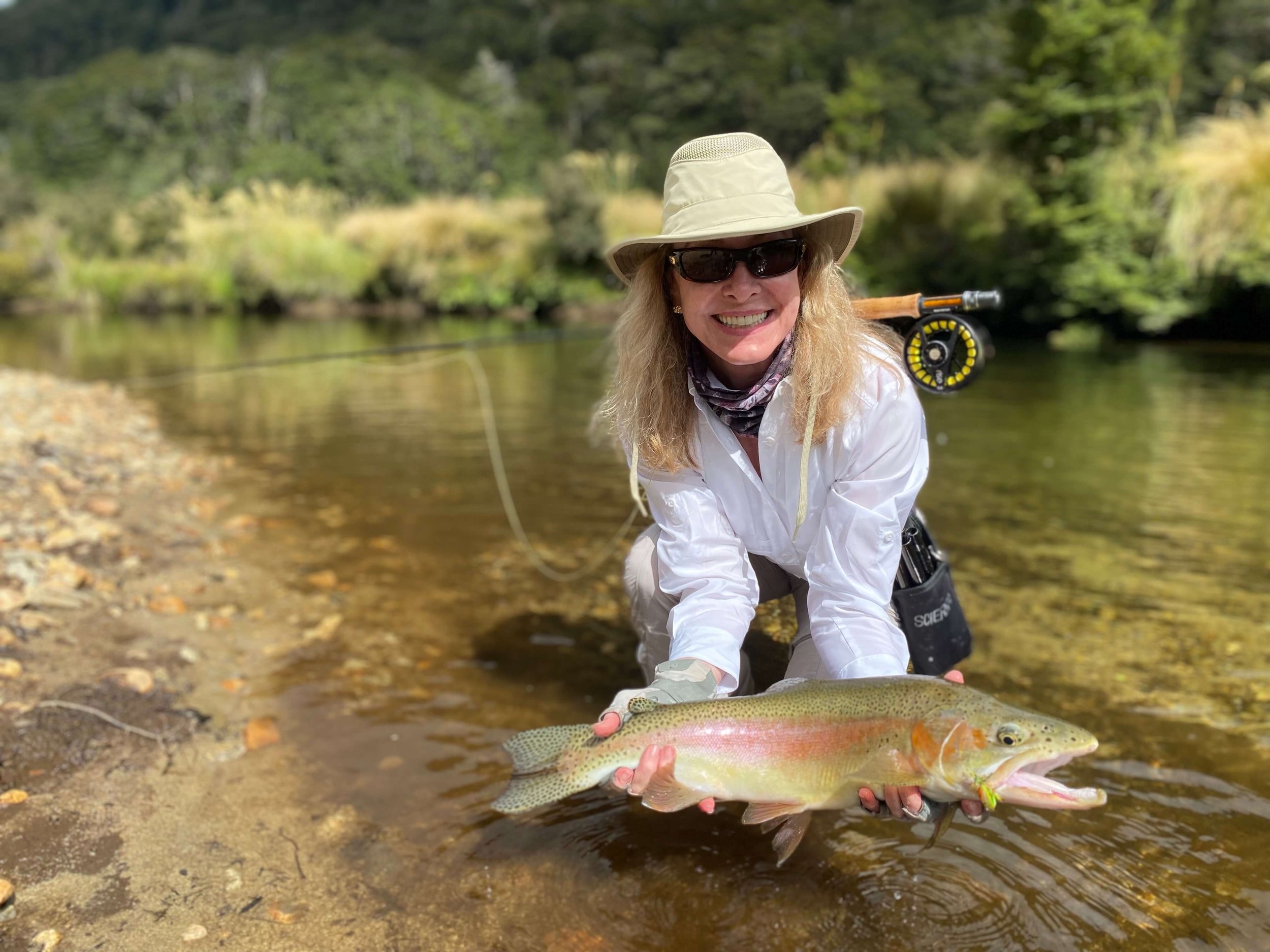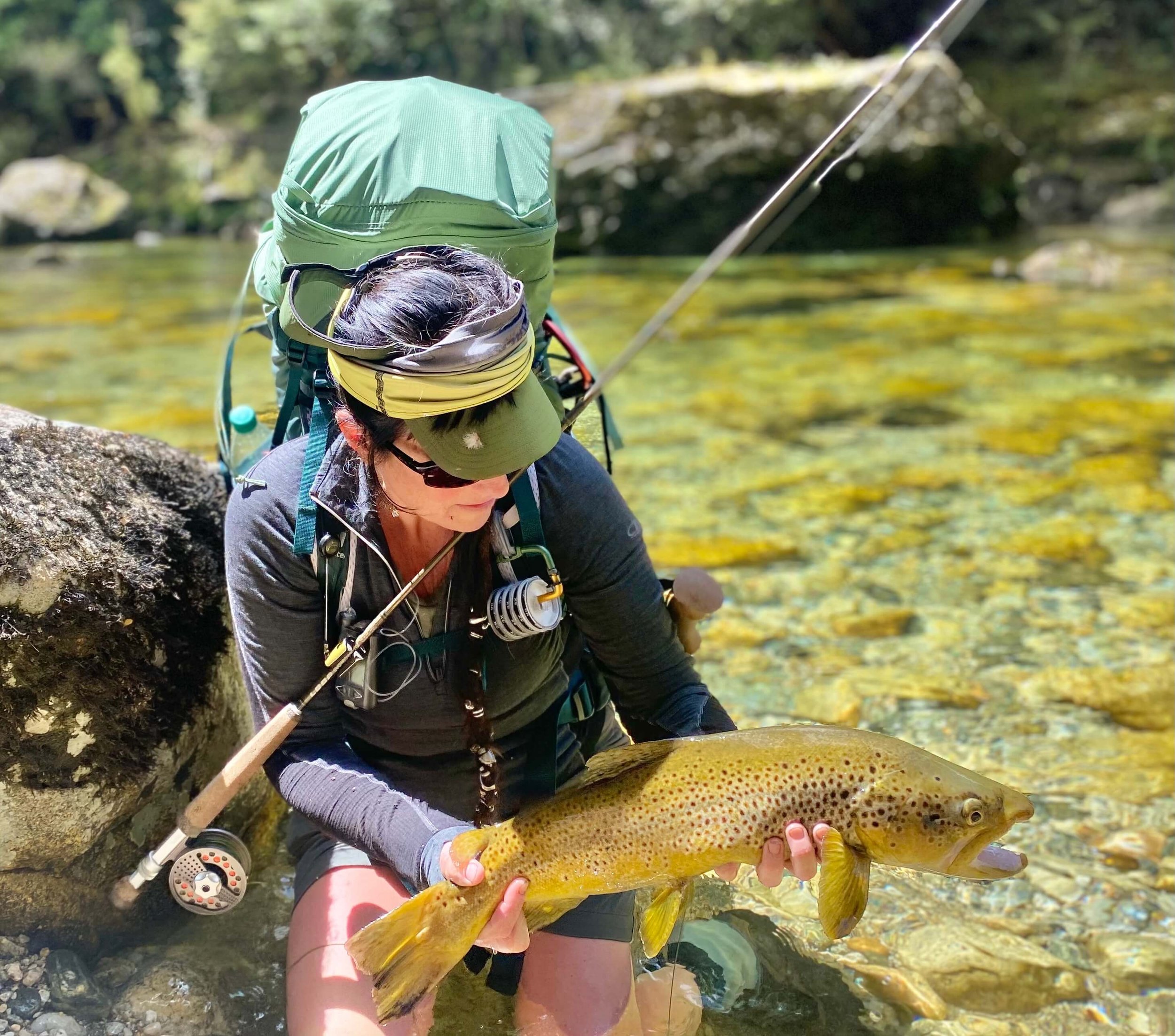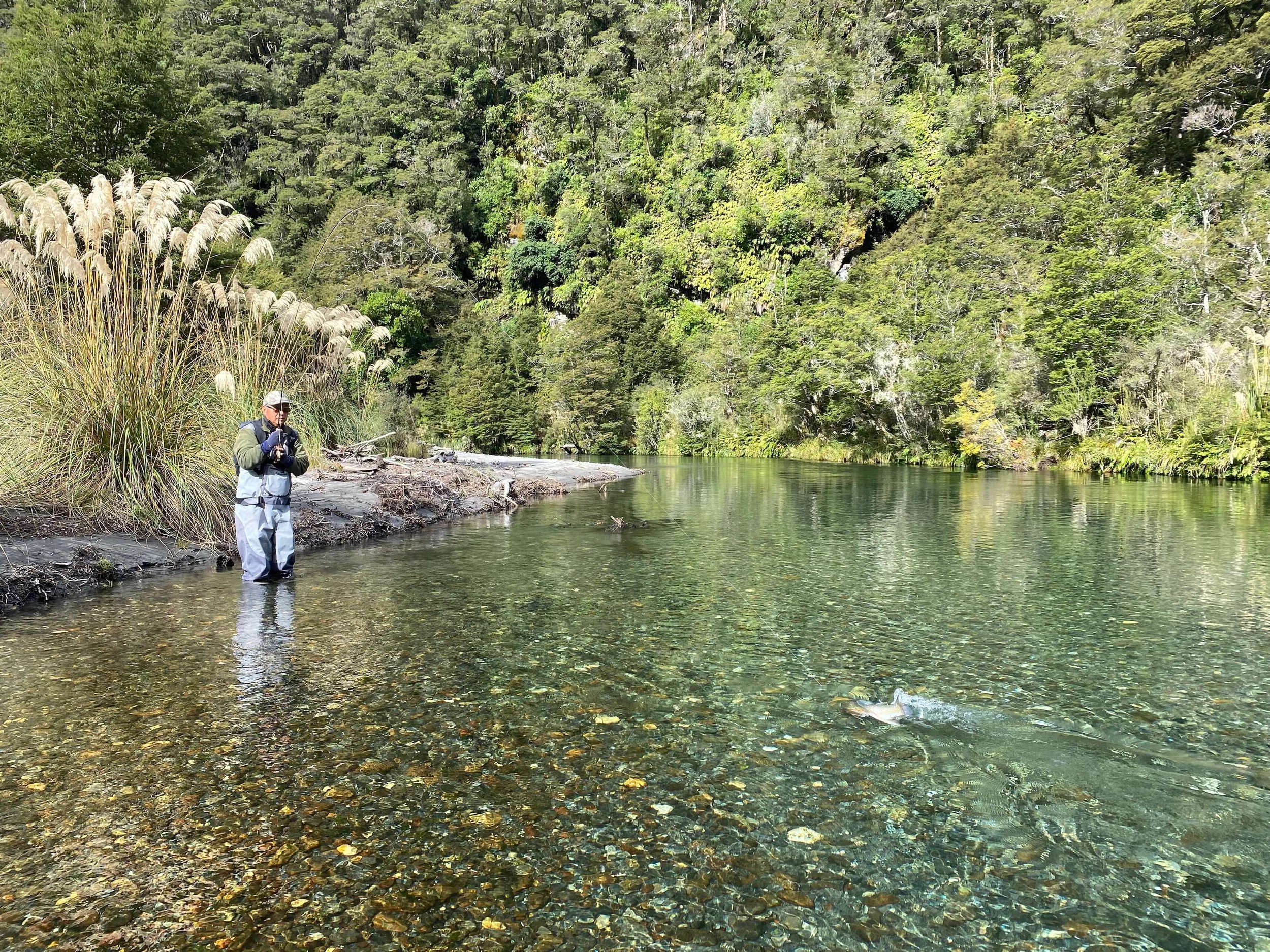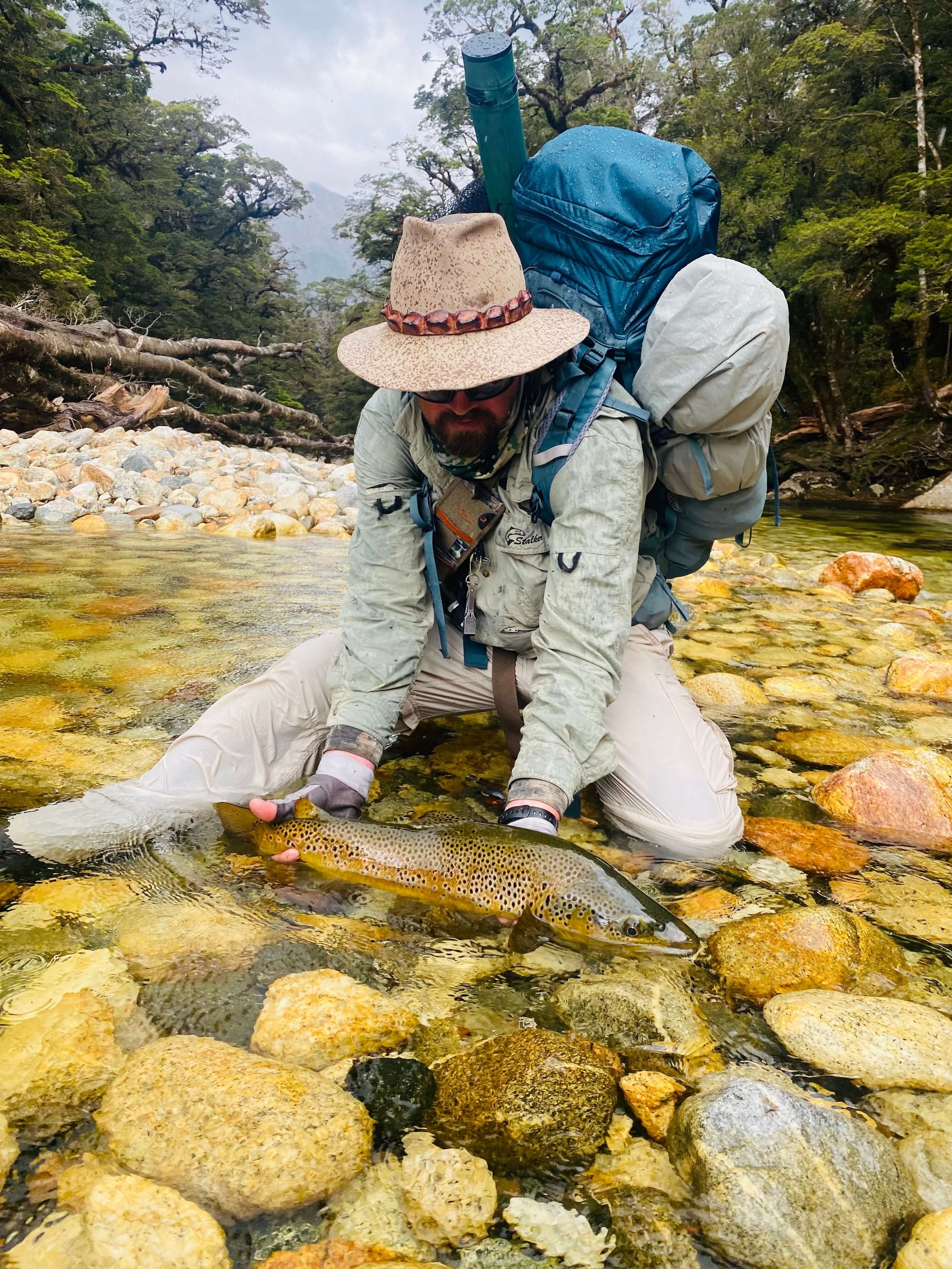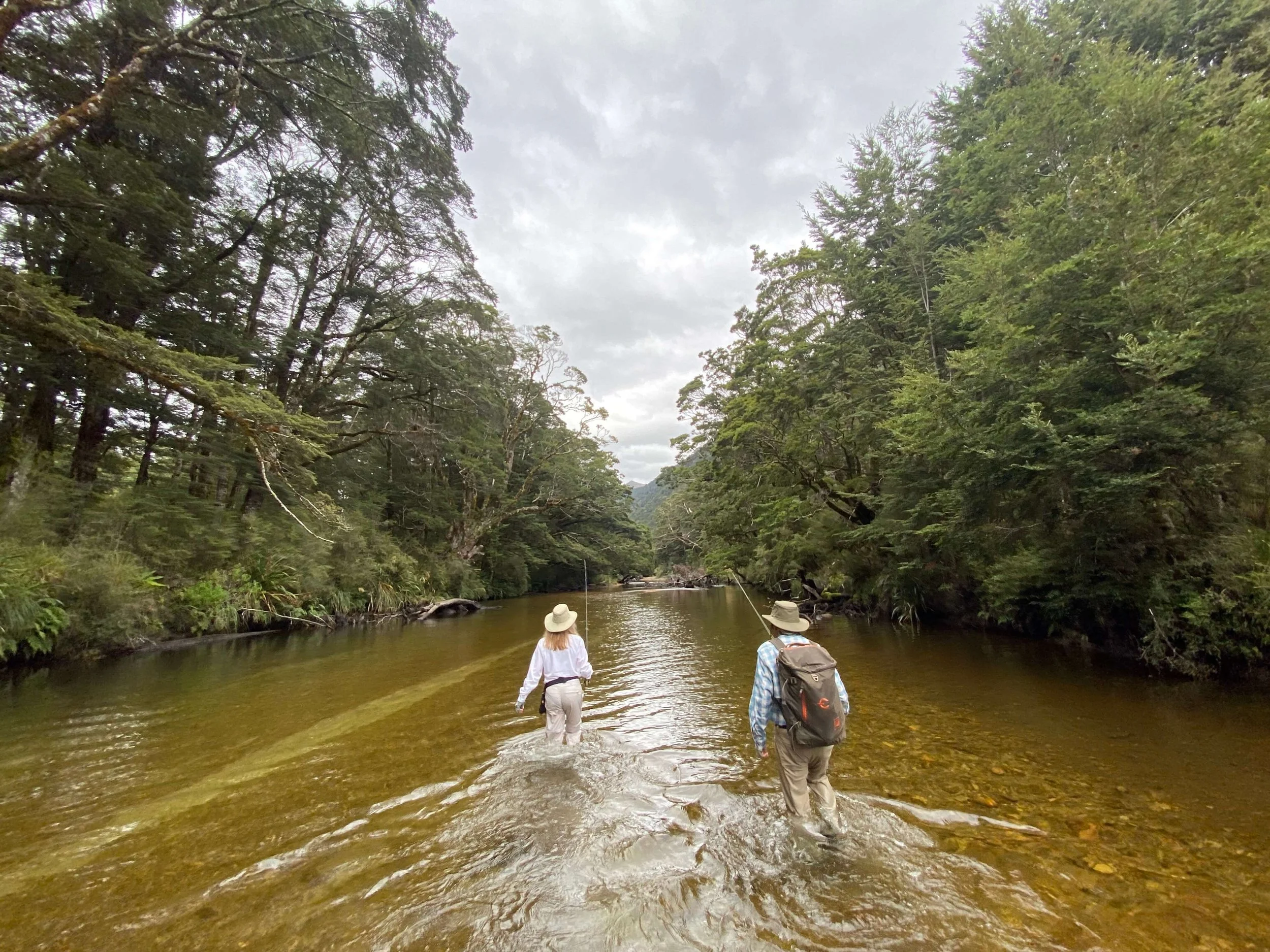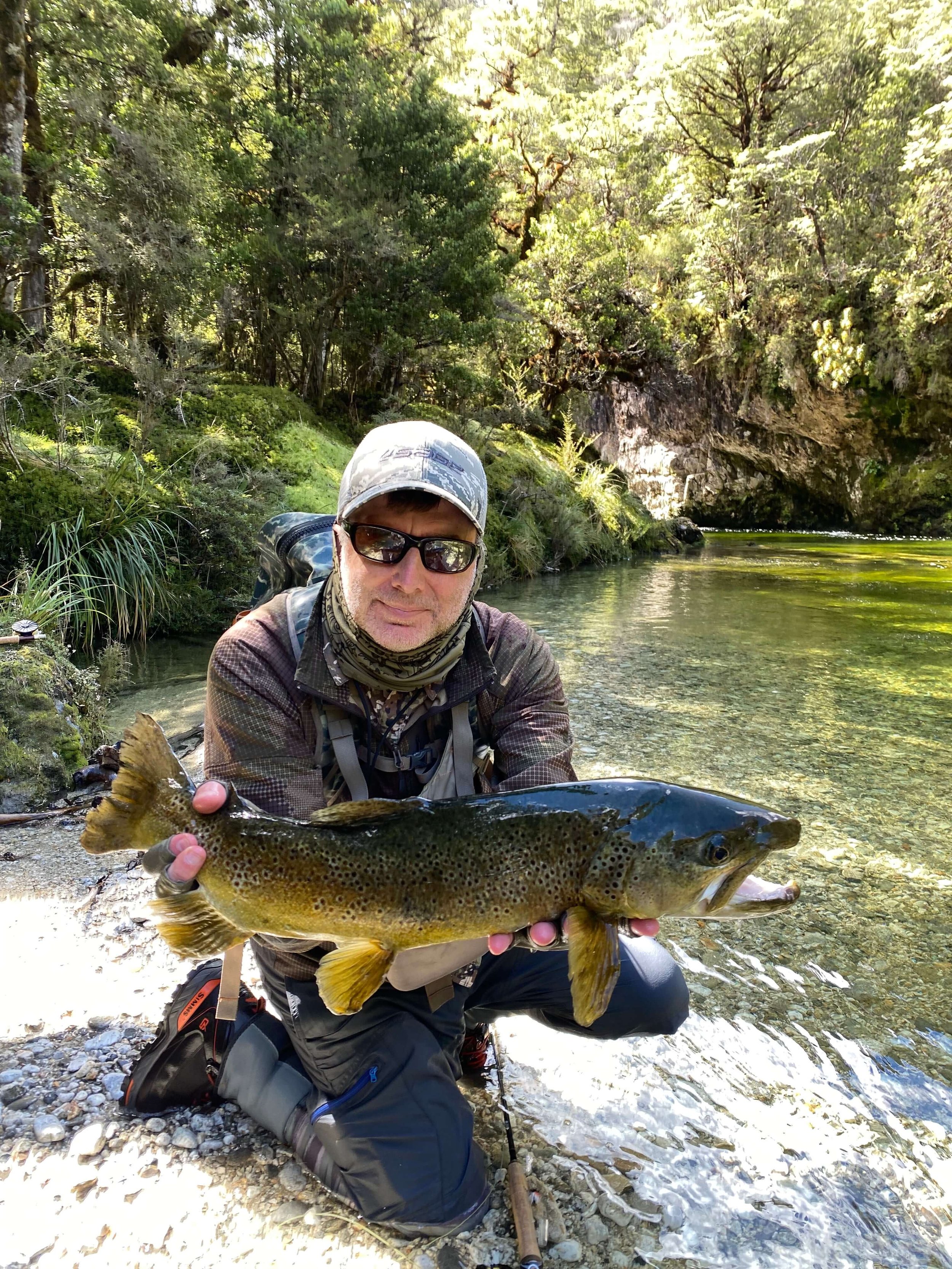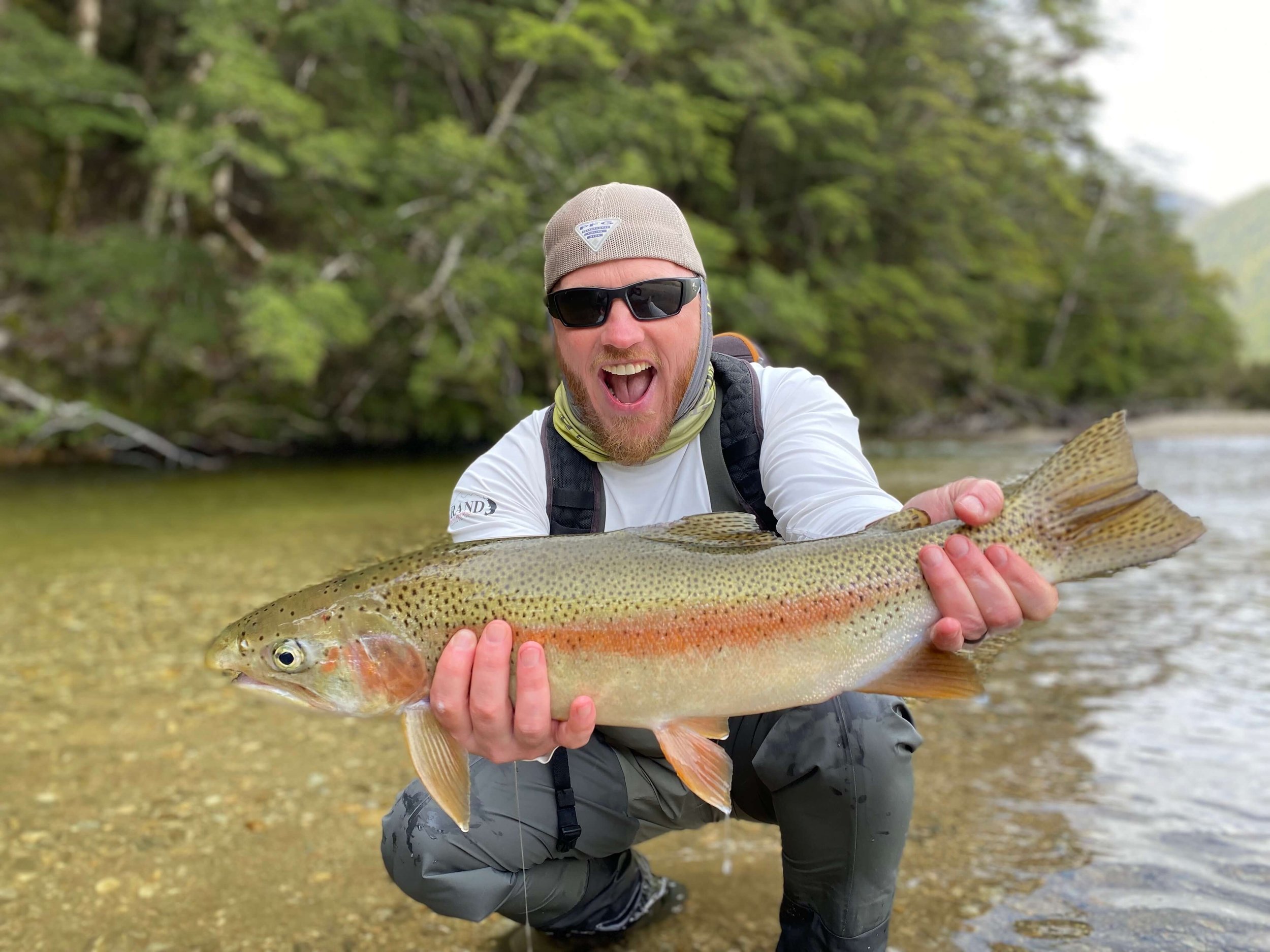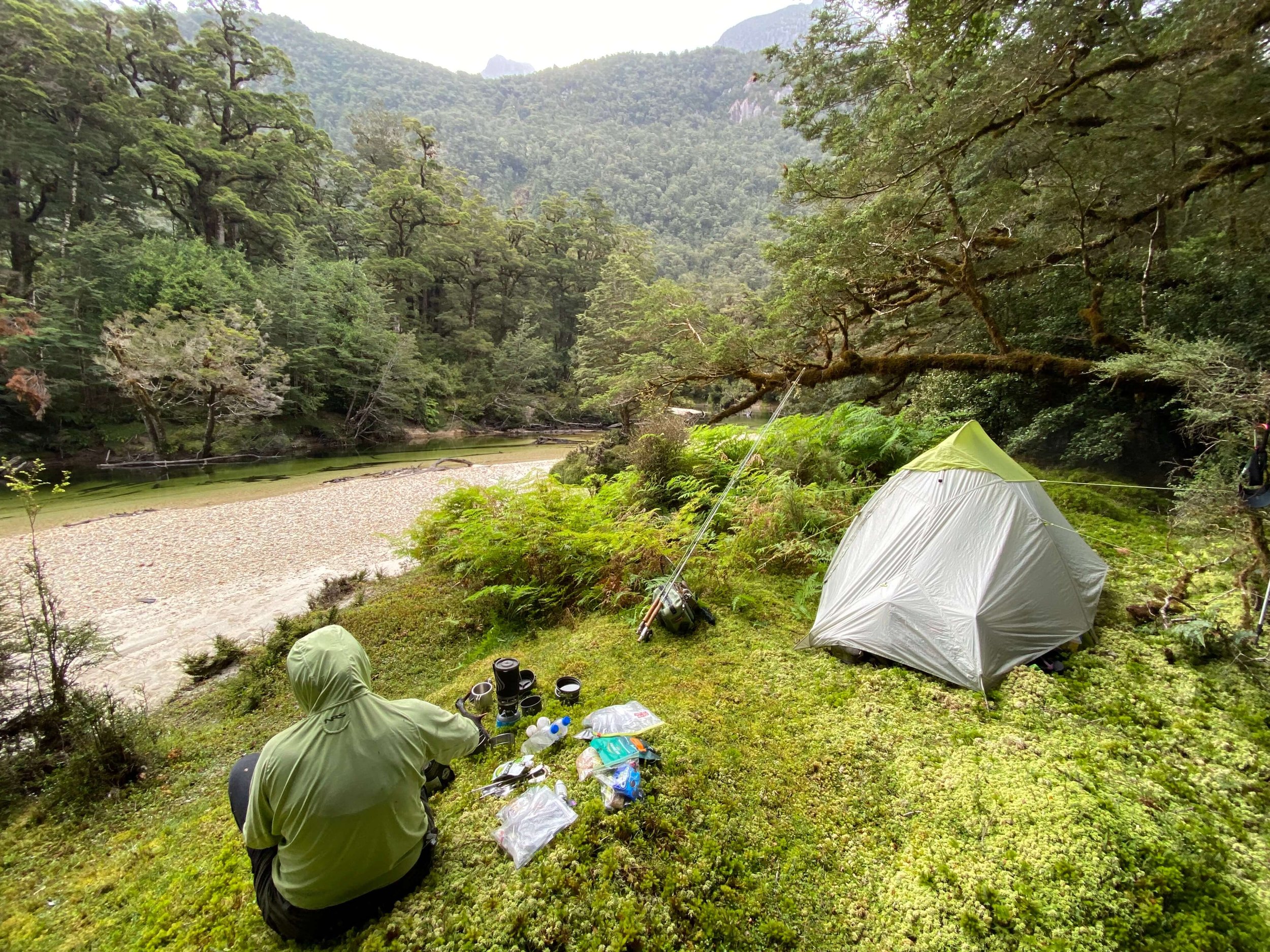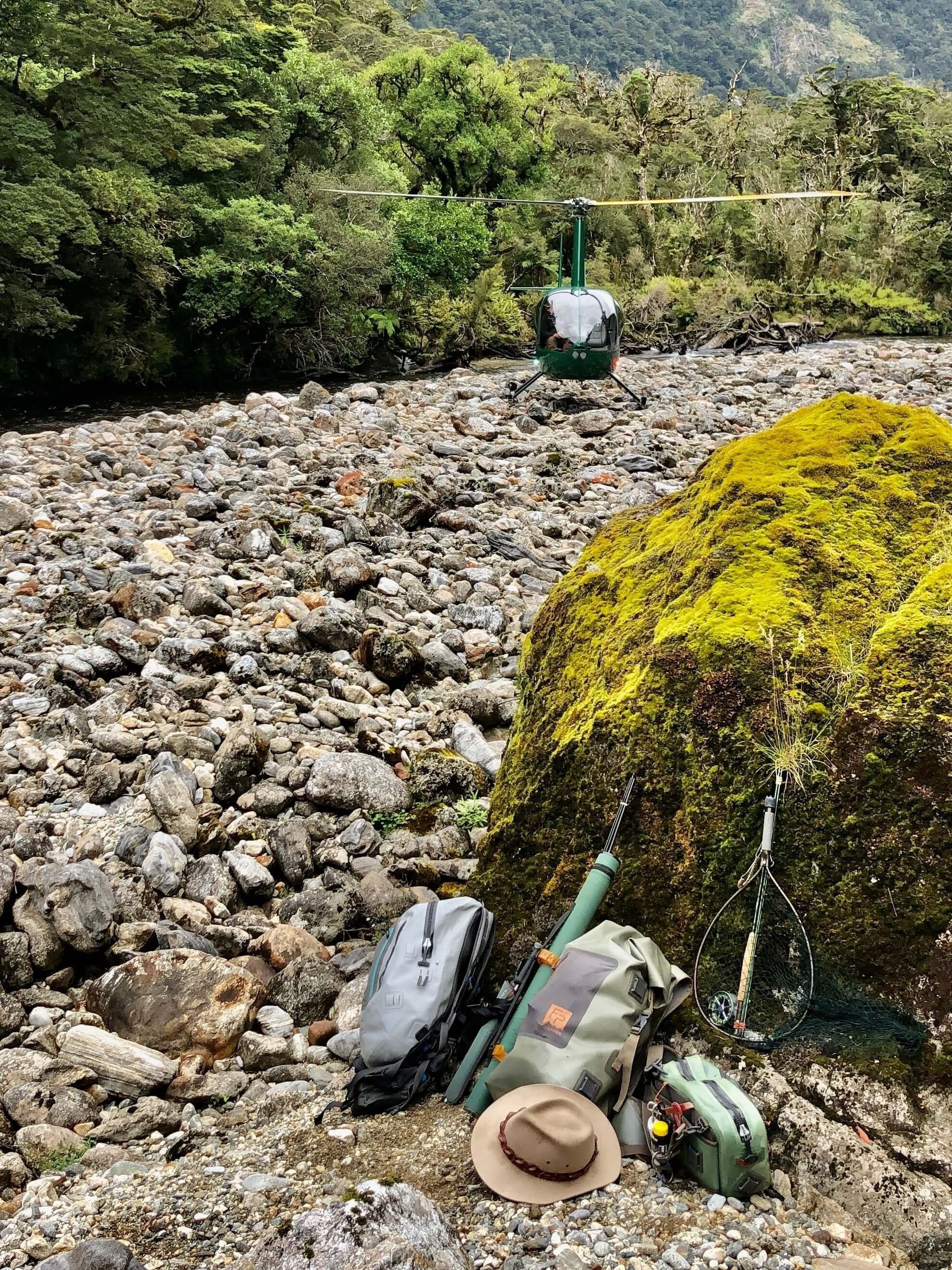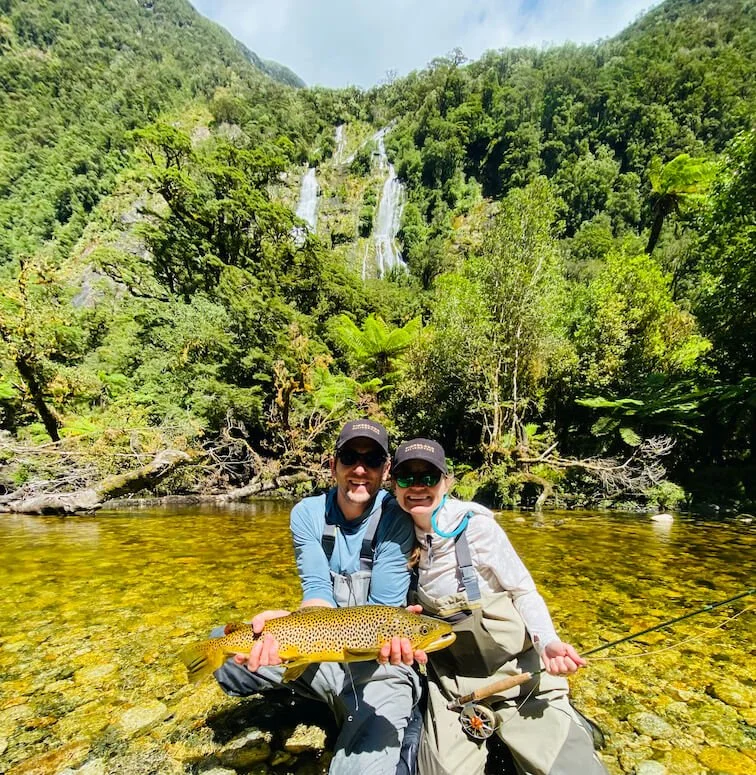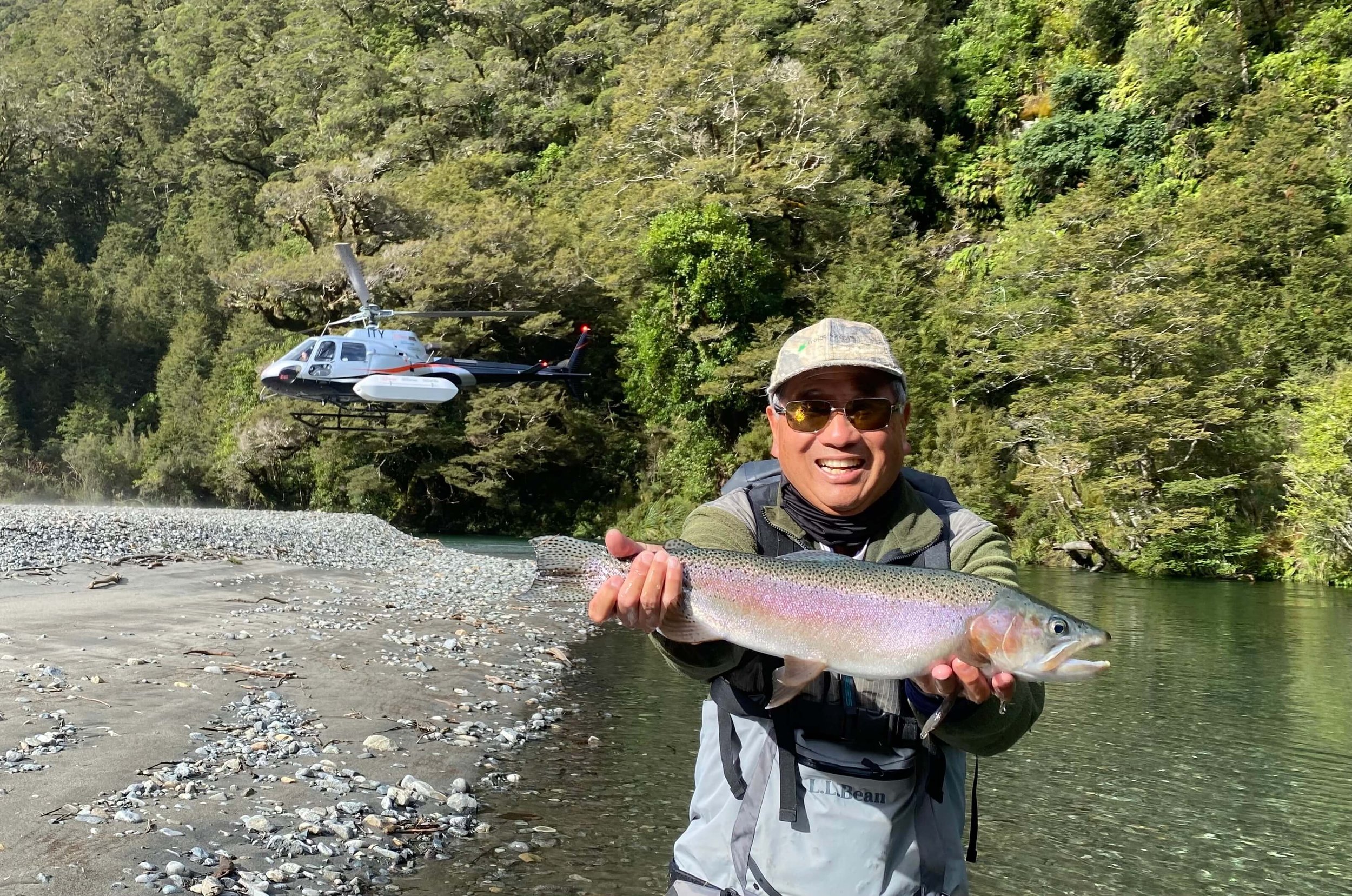
Adventure into Fiordland’s Remote Streams
Experience something completely unique.
Access Fiordland’s backcountry fisheries via helicopter, float plane or water taxi.
Pristine Rivers & Streams
Fiordland’s 1.2 million hectare wilderness has a reputation for untouched beauty and majestic extremes. These fisheries represent some of the most breathtaking locations to pursue trout in the world but they are not for the faint hearted or inexperienced angler. Aquatic macroinvertebrates (trout food) abundance is typically quite low in these streams, due to the high rainfall and frequent flooding that flushes nutrients out of the watersheds. Trout are also generally quite low in numbers and they are intolerant of poor presentations or a cumbersome approach. A high level of fitness is essential to traverse these rugged streams on foot.
Wily Wild Trout
Fiordland’s remote west coast streams are home to wild brown trout that self-established through migrating sea trout. Population densities and average size can vary a lot from season to season or between fisheries but most fish are in the 3-5lb range. Larger fish are encountered during a mouse plaque year that follows a Beech tree mast event. The rivers that feed Lakes Te Anau, Manapouri and Monowai contain both Browns and Rainbows. As a general rule, the wilderness streams are quality rather than quantity fisheries in terms of catch rates which are best suited to experienced and fit anglers that can make their shots at fish count.
Ancient Beech & Podocarp Forests
Fiordland’s dramatic landscape resulted from glaciation 100 million years ago. It’s native forests are home to some of the most representative flora and fauna of the supercontinent Gondwanaland, from a time well before mammals had evolved. The majority of Fiordland’s temperate rainforest is dominated by Beech tree ecosystems but Podocarp Forest is prevelant in the Southern parts of the park. Silver Beech is the most common tree found in Fiordland but there are over 700 endemic plant species found across Fiordland’s diverse valley floors, meadows, forests and mountain tops.
Day Trips
$1350 per day (1–2 anglers)
Price includes packed lunch, guiding, NZ goods and services tax, Dept Conservation fees, clean gear certificates, terminal tackle (flies, tippet, etc), safety equipment, vehicle transport to departure location for helicopter, float plane or water taxi. Excludes rental equipment (Waders/Boots, Rod/Reel), NZ fishing licenses and fees for aircraft or water taxis transport.
Rental Waders/Boots – $25 per person / day
Rental Rod/Reel – $25 per person / day
Helicopter fees starting at ~$3500
Float plane fees starting at ~$3000
Water-Taxi fees stating at ~$2500
Overnight Trips
Priced upon request due to the diverse nature of options
Overnight wilderness trips can provide the best “bang for buck” in terms of aircraft or water taxi fees. These trips can range from ultra-light camping trips, hut trips, glamping style trips (with a camp manager and host) or a combination of camping and huts. The options are quite diverse and highly weather dependent, so overnight trips are planned and priced on a case by case basis to reflect the specific details and logistics of the trip.
Any trip into Fiordland needs to be planned with the understanding that the weather may prevent a trip occurring and an alternative plan may be required. We always have plan B, C and D if mother nature stuffs up our wilderness aspirations. Get in touch with us to discuss the options.
An important note about Sandflies – the protectors of Fiordland’s beauty and bounty.
The Fiordland Sandfly (Austrosimulium ungulatum) has a well deserved reputation for being the most ferocious of New Zealand’s 19 sandfly species. The Maori name for sandflies is Namu and they are better known as Black Flies in other parts of the world. A Maori legend, lays responsibility for Te Namu on Hinenuitepo, goddess of the underworld. As she gazed at the beauty crafted by Tuterakiwhanoa, the carver of Fiordland, she was fearful that humans would not want to leave such a paradise. Te Namu were to remind humans of their mortality and not to linger…..
Only the females bite but at around ~3mm in size, these tiny black blood suckers should not be underestimated. Sandflies are abundant, relentless and extremely perseverant antagonisers to any anglers venturing into Fiordland’s streams and lakes. Wearing light colours (e.g. greys, fawn, light olive), covering up exposed skin with buffs and gloves and wearing bug spray are necessities for being in this environment. For our overnight glamping trips, we bring along a sandfly proof dinning enclosure. Fortunately, Sandflies are not very active at night, so we do get a reprieve from them after dark.

